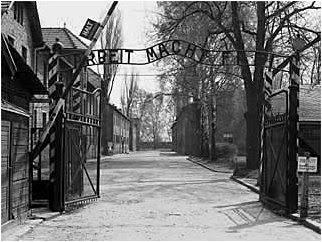It is rather common for certain events, particularly in time of war, to be associated with the community in which the event occurred or was near. Place provides something tangible so we tend to attach significant events to place. For example, when we hear of Gettysburg, we do not think of a community in southern Pennsylvania, but rather of the battle that would be the turning point of the Civil War. In WWII we know Yalta not as a Crimean resort, but as the location of one of the Allied conferences to set the terms of control of Europe. A community may become famous by historical accident, but often due to some aspect of geography. It is not like the legislative body of Gettysburg went out to Robert E. Lee and asked him to bring the Army of Northern Virginia north for an invasion. Similarly, it is doubtful that most residents of Wannsee, Germany knew, at the time, that the decision setting forth one of the most horrific events in all of human history occurred in their community. That gathering is now known as the Wannsee Conference.
 |
SS second in command Reinhard Heydrich
(Source: holocaustresearchproject.org) |
It was on this date in 1942 that SS-Lieutenant General Reinhard Heydrich, Chief of the Security Police and Security Service and second in the SS to only Heinrich Himmler, would gather fourteen top bureaucrats of Nazi Germany for a decision that still roils the world 72 years later. The group agreed to pursue the Final Solution of the Jewish Problem. These were not uneducated men, but rather the opposite with over half possessing a doctorate. Looking back they obviously lacked empathy and a sense of morality. Perhaps, to the benefit of Wannsee, when most of us think of the Final Solution it is not the place in which the determination was made, but rather places where it was implemented. Like much in war, and the world, euphemisms are used to play down the event. We see euphemisms in regular use today. Final Solution was to involve the murder of a segment of the population from all of Europe.
 |
| The Conference Room (Source: holocaustresearchproject.org ) |
With the efficiency one would expect of a German commander, the meeting, led by Heydrich would last just about one and a half hours. The conference was held at a German Security Services guest house known as Villa Minoux, in Wannsee, a Berlin suburb. Up until this point, the German policy was principally one of forced emigration of Jews to other countries, but difficulties in transporting to other countries was made more difficult by war time conditions. Hence, the decision to proceed with a policy invoking the Final Solution. The program involved an "evacuation to the east," meaning to the concentration camps, of the Jewish population of Europe, estimated by the Nazi's in
minutes of the conference at 11 million persons. Showing optimism, but more likely their hubris, they also planned for the eastern evacuation of 330,000 Jews in England. As they viewed the Jewish people as inferior, they thought that many would succumb to "natural causes," meaning overwork and starvation. Those not succumbing to "natural causes" would be subject to the "Final Solution," meaning systematic murder or really genocide; or as a euphemism in use today, ethnic cleansing.
 |
| Page 1 of Conference Minutes |
The second half of the meeting would involve how to treat persons of mixed race, to which the minutes include discussion down to a sixth level being:
Marriages between Persons of Mixed Blood of the First Degree and Persons of Mixed Blood of the Second Degree. Some groups, as well as those over 65 years of age were to be transported to what were called old-age ghettos, rather than the concentration camps (although if and how they differed I do not know). Showing implementation efficacy for this gruesome and horrific task, the first gas chambers would begin to show up in concentration camps within a couple months of the Wannsee Conference.
From 1938 through 1942 Germany was at its peak militarily. Its decline would be tied to the entry of the United States into the war. Interestingly, the Wannsee conference was to be held on December 9, 1941, but was postponed due to the Japanese attack on Pearl Harbor on December 7. On December 11, 1941 the US and Germany, following treaties with their allies, would declare war on each other. Just under three years later Adolph Hitler would descend into his self-contained underground bunker in Berlin, coming out but a few times, until he took his own life near the end of April. The war would end in May 1945, much too late for the several million Jews, and others who lost their lives as part of the Final Solution. As for place, Auschweitz-Birkenau, Dachau, and Buchenwald, just to name a few, are forever etched in our minds. This event also shows us that words are important, and the use of sanitized language, as Adolph Eichmann said, made the decision rather easy. Yet today, we still see the inhumanity of man to man, and euphemisms are remarkably present. We can only hope and pray that the Geneva 2 conference scheduled to start January 22, 2014 regarding Syria will reach some agreeable solution to end the persecutions and the conflict. Let us also remember, as Martin Luther King, Jr day is celebrated today, that even the US has nefarious activities in its past.
 |
Main gate to Auschweitz and it famous sign--Work Makes Freedom
(Source: historyplace.com) |




No comments:
Post a Comment